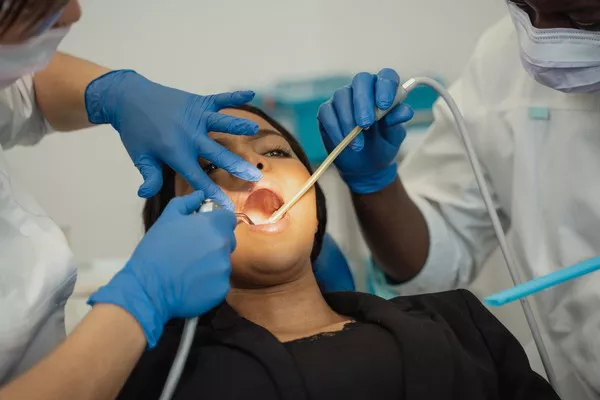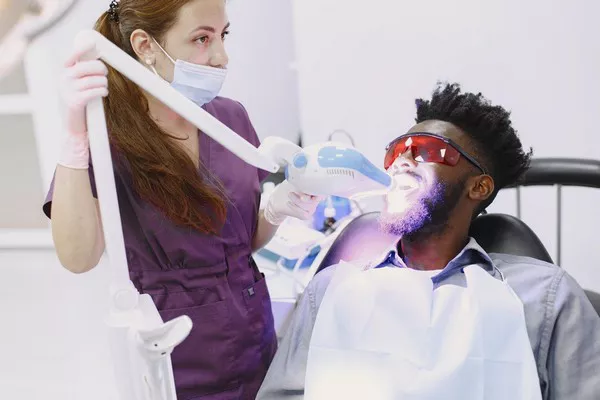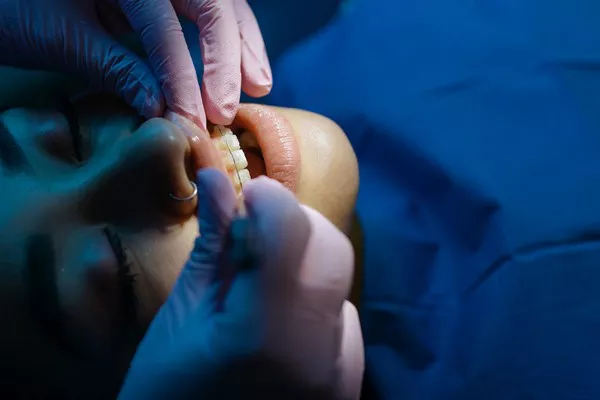Dental curing lights are indispensable tools in modern dentistry, playing a crucial role in hardening or “curing” light-sensitive dental materials such as composite fillings, sealants, and bonding agents. These devices emit a specific wavelength of light that activates photoinitiators within the dental materials, initiating a polymerization reaction that transforms them from a pliable state to a hardened, durable form. In this article, we’ll explore the various types of curing lights, their functionality, benefits, safety considerations, technological advancements, maintenance practices, and the patient experience associated with their use.
Types of Curing Lights
Traditionally, tungsten halogen lights were the go-to option for dental curing. These lights emitted a broad spectrum of light, including visible and infrared wavelengths, which could lead to excessive heat generation during prolonged use. However, with advancements in technology, light-emitting diodes (LEDs) have become the preferred choice for dental curing applications.
LED curing lights offer several advantages over their halogen counterparts. Firstly, they produce light in a narrow band of wavelengths, specifically targeting the activation of photoinitiators in dental materials without generating excessive heat. This precise wavelength targeting enhances the efficiency of the curing process and reduces the risk of thermal damage to the surrounding tissues. Additionally, LED lights have a longer lifespan and consume less energy compared to tungsten halogen lights, making them more cost-effective and environmentally friendly.
Functionality and Benefits
The functionality of curing lights is relatively straightforward yet highly effective. When a dentist applies a light-sensitive dental material, such as a composite filling, to a patient’s tooth, they use a curing light to initiate the polymerization process. The intense light emitted by the device activates the photoinitiators within the material, causing it to harden and bond to the tooth structure.
One of the primary benefits of LED curing lights is their efficiency. Unlike halogen lights, which emit a broad spectrum of light, LEDs produce a focused beam of light at the specific wavelength required for curing dental materials. This targeted approach accelerates the polymerization reaction, allowing dentists to complete procedures more quickly and efficiently.
Furthermore, LED curing lights do not overheat during prolonged use, ensuring patient comfort and safety throughout the treatment process. The lack of excess heat reduces the risk of thermal damage to the tooth pulp and surrounding tissues, minimizing post-operative sensitivity and discomfort for the patient.
Safety and Comfort
Safety is paramount in dentistry, and LED curing lights offer several advantages in this regard. The blue light emitted by these devices falls within the visible blue light spectrum, which is considered safe for human tissues. Unlike ultraviolet (UV) lights, which were previously used for curing dental materials, blue light poses minimal risk of tissue damage or adverse side effects.
Moreover, the use of LED curing lights does not cause discomfort for patients during dental procedures. Unlike traditional halogen lights, which can generate significant heat and cause discomfort or even burns if they come into contact with the patient’s soft tissues, LED lights remain cool throughout the curing process. This ensures a comfortable and pain-free experience for patients, enhancing their overall satisfaction with dental treatments.
Advancements in Technology
The field of dental curing lights has witnessed significant advancements in technology in recent years, driven by the constant pursuit of improved patient outcomes and treatment efficiency. One notable advancement is the transition from UV lights to blue lights for curing resin-based composites.
UV curing lights, which were commonly used in the past, emitted high-energy ultraviolet radiation to initiate the polymerization of dental materials. While effective, UV lights had limitations, including poor penetration depth and the potential for tissue damage due to their high-energy output. In contrast, blue light offers better penetration into dental materials, ensuring thorough polymerization and optimal bond strength.
Furthermore, blue light is less harmful to oral tissues compared to UV radiation, making it a safer option for both patients and dental practitioners. By harnessing the power of blue light, dentists can achieve predictable and long-lasting results while prioritizing patient safety and comfort.
Maintenance and Care
Like any other dental equipment, curing lights require regular maintenance and care to ensure their longevity and effectiveness in dental treatments. Dentists should adhere to manufacturer guidelines for cleaning, disinfection, and calibration of curing lights to maintain optimal performance.
Routine maintenance tasks may include cleaning the light guide and curing tip with alcohol wipes or disinfectant solutions to remove any debris or residue. Additionally, dentists should periodically check the light output intensity and wavelength accuracy of their curing lights using a radiometer or light meter to ensure consistent curing performance.
Proper storage of curing lights is also essential to prevent damage and contamination. Dentists should store their curing lights in a clean, dry environment away from excessive heat, moisture, or direct sunlight. When not in use, the curing light should be turned off and unplugged to conserve energy and prevent overheating.
Patient Experience
For many patients, the thought of undergoing dental procedures can be anxiety-inducing. However, the use of LED curing lights can help alleviate some of these concerns by offering a quick, efficient, and pain-free treatment experience.
During a dental procedure that involves the use of a curing light, such as a composite filling or sealant placement, patients can expect the following steps:
- Preparation: The dentist will prepare the tooth by removing any decay or damaged tissue and cleaning the area thoroughly.
- Application of Dental Material: The dentist will apply the light-sensitive dental material, such as composite resin, to the prepared tooth.
- Curing Process: The dentist will use a curing light to expose the dental material to the appropriate wavelength of light, initiating the polymerization reaction and hardening the material.
- Finishing and Polishing: Once the material is fully cured, the dentist will shape, contour, and polish it to achieve the desired aesthetic and functional result.
Throughout this process, patients may feel a slight warming sensation as the curing light is applied, but they should not experience any discomfort or pain. The entire procedure is typically completed within a matter of minutes, minimizing chair time and allowing patients to resume their normal activities without delay.
Conclusion
Dental curing lights play a vital role in modern dentistry, enabling dentists to deliver high-quality restorative treatments quickly, efficiently, and comfortably. With the advent of LED technology and ongoing advancements in curing light design, patients can look forward to safer, more pleasant dental experiences while enjoying the benefits of durable and aesthetically pleasing dental restorations. By prioritizing patient safety, comfort, and satisfaction, dental professionals can continue to enhance the standard of care and promote oral health and well-being for all.
FAQs About Dental Curing Lights
1. What kind of light is used in dental fillings?
In dental fillings, dentists commonly use a specific type of light known as a dental curing light. These lights emit a precise wavelength of blue light that activates photoinitiators within the dental materials, initiating a polymerization reaction that transforms them from a pliable state to a hardened, durable form.
2. Why do dentists use UV light to harden fillings?
While ultraviolet (UV) light was previously used in dental practices to cure fillings, the use of UV light has decreased significantly in recent years. UV light initiates the polymerization of dental materials by activating photoinitiators; however, it has limitations, including poor penetration depth and the potential for tissue damage due to its high-energy output. Therefore, UV light is not commonly used for curing dental fillings today.
3. What light is used to harden fillings?
The light most commonly used to harden dental fillings today is blue light emitted by light-emitting diode (LED) curing lights. LED curing lights offer several advantages over traditional UV lights, including better penetration into dental materials, reduced risk of tissue damage, and enhanced patient comfort. These lights are highly efficient and ensure thorough polymerization of the dental material, resulting in durable and long-lasting fillings.
4. Is dental curing light safe?
Yes, dental curing lights are considered safe for both patients and dental practitioners when used properly. The blue light emitted by these devices falls within the visible blue light spectrum, which is safe for human tissues. Unlike UV lights, which can pose a risk of tissue damage, blue light emitted by LED curing lights minimizes the risk of adverse side effects. Additionally, LED curing lights do not generate excessive heat during use, further enhancing patient comfort and safety during dental procedures.
































